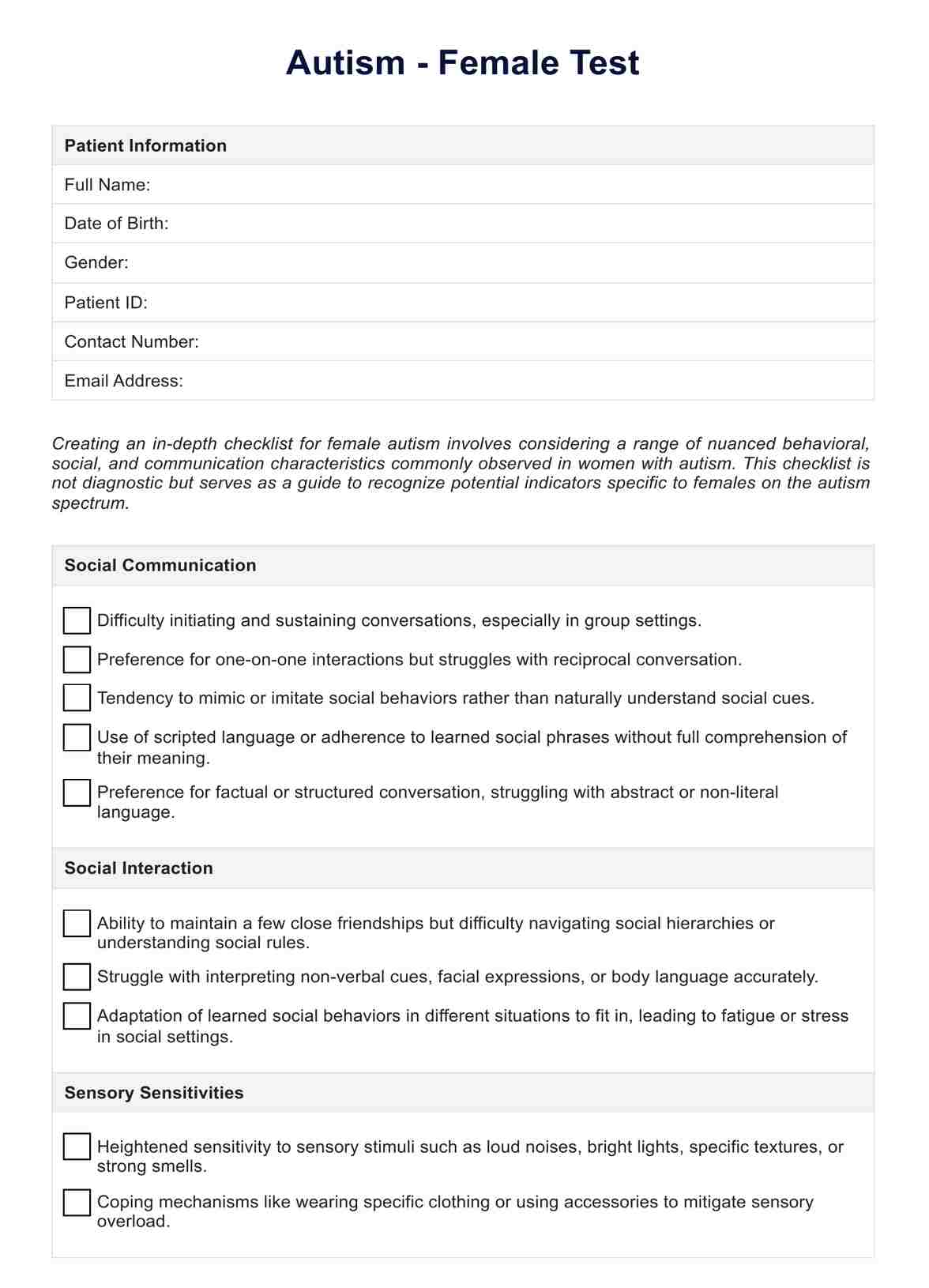This question reflects concerns about the potential gender bias in traditional autism assessment tools, which were initially developed based on the male presentation of autism. There is a growing awareness that females with autism may exhibit different characteristics, and there is ongoing research to improve the sensitivity of assessment tools for females.

Autism Women Test
Discovering the nuances: A guide to female autism screening—unveiling unique traits, challenges, and tailored approaches for accurate assessments.
Autism Women Test Template
Commonly asked questions
Many people are interested in understanding the nuanced presentation of autism in females. Females with autism may show social and communication challenges, as well as repetitive behaviors, but these might manifest differently from the more stereotypical male presentation. For instance, females may develop coping mechanisms that mask certain traits, making it challenging to recognize autism in them.
This question addresses the concept of masking, where individuals, particularly females, may consciously or unconsciously adopt social behaviors to hide or compensate for their autistic traits. As a result, standard autism assessments may overlook specific characteristics in females, leading to underdiagnosis or delayed diagnosis. Understanding the impact of masking behaviors is crucial for improving the accuracy of autism assessments in females.
EHR and practice management software
Get started for free
*No credit card required
Free
$0/usd
Unlimited clients
Telehealth
1GB of storage
Client portal text
Automated billing and online payments











